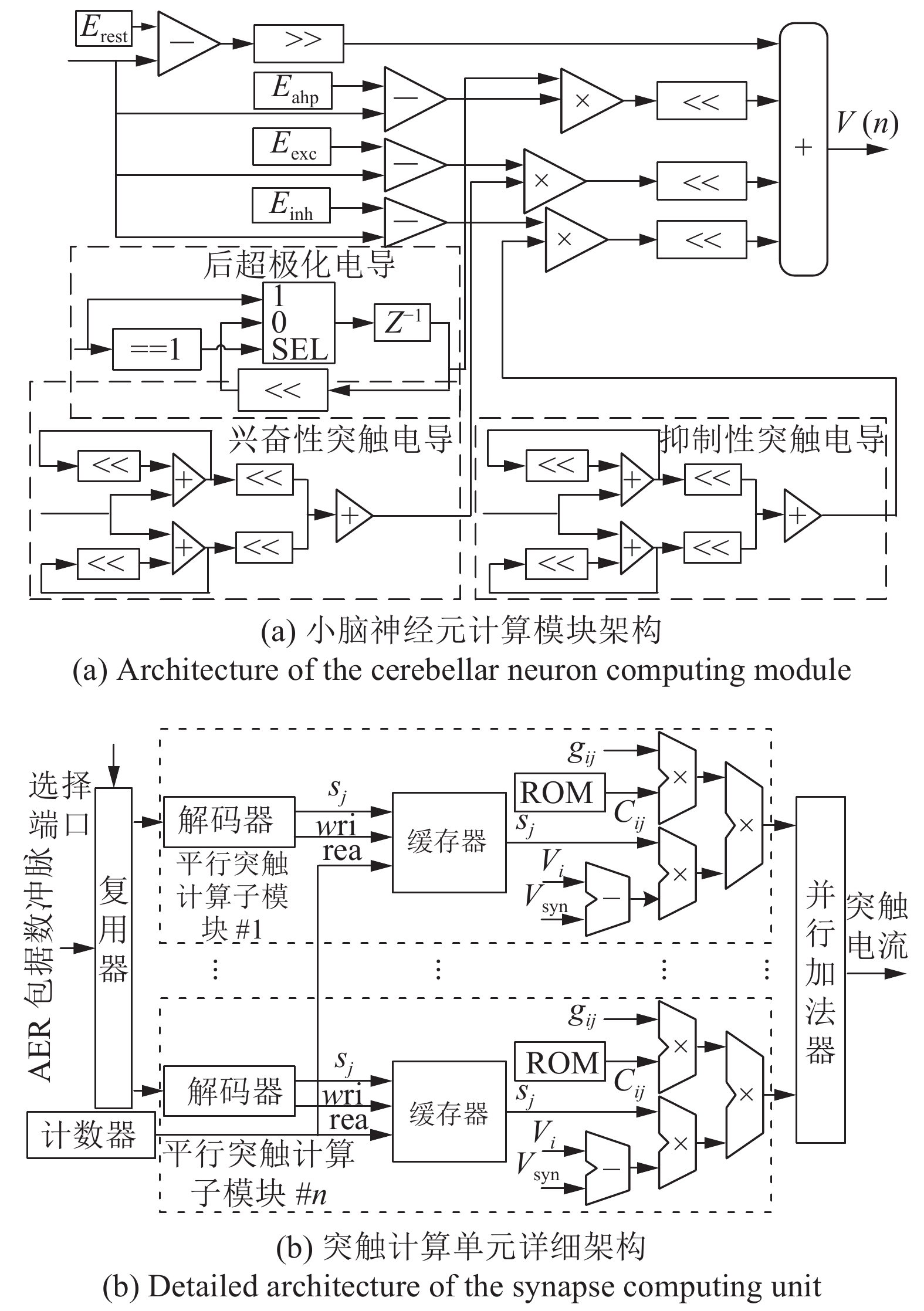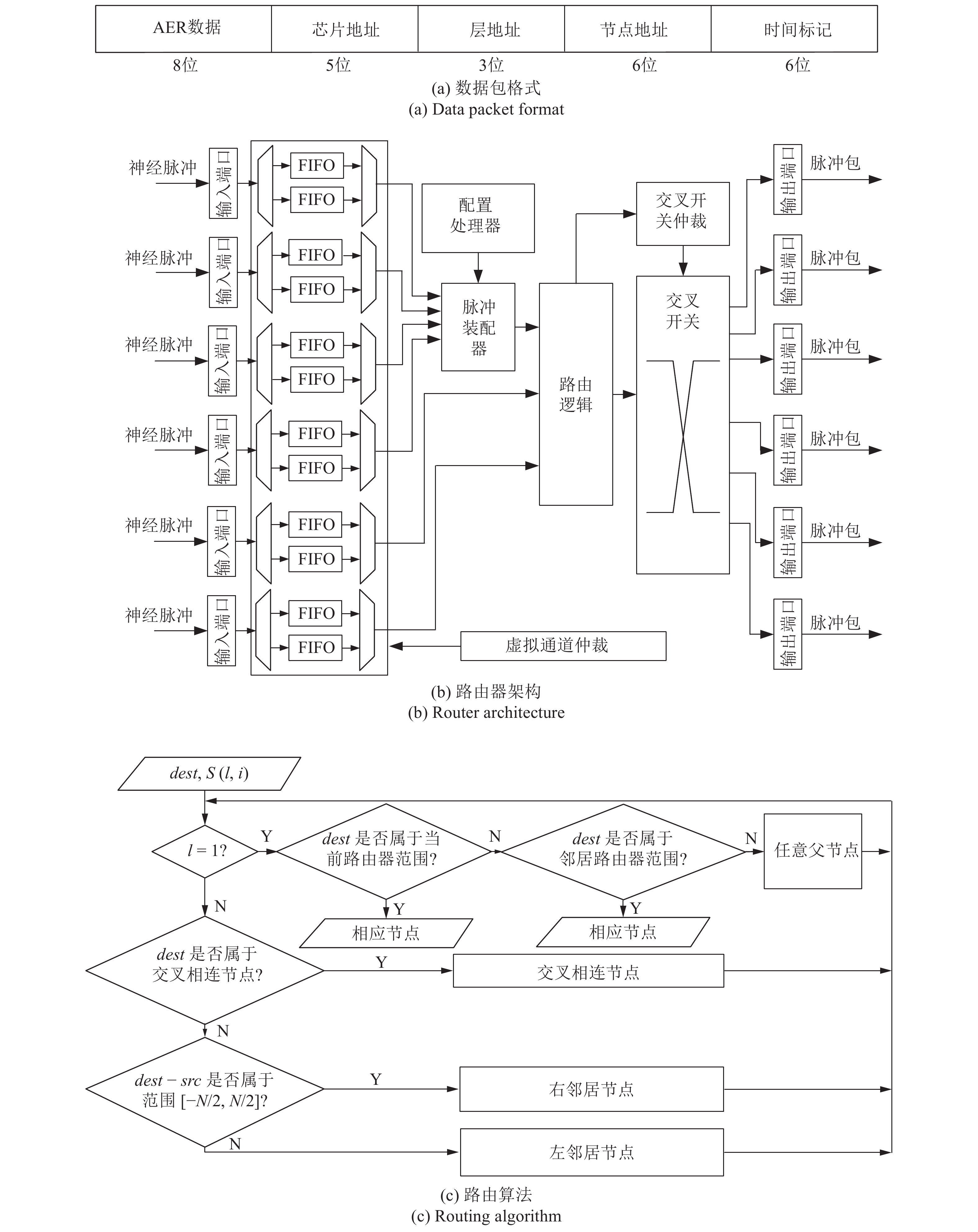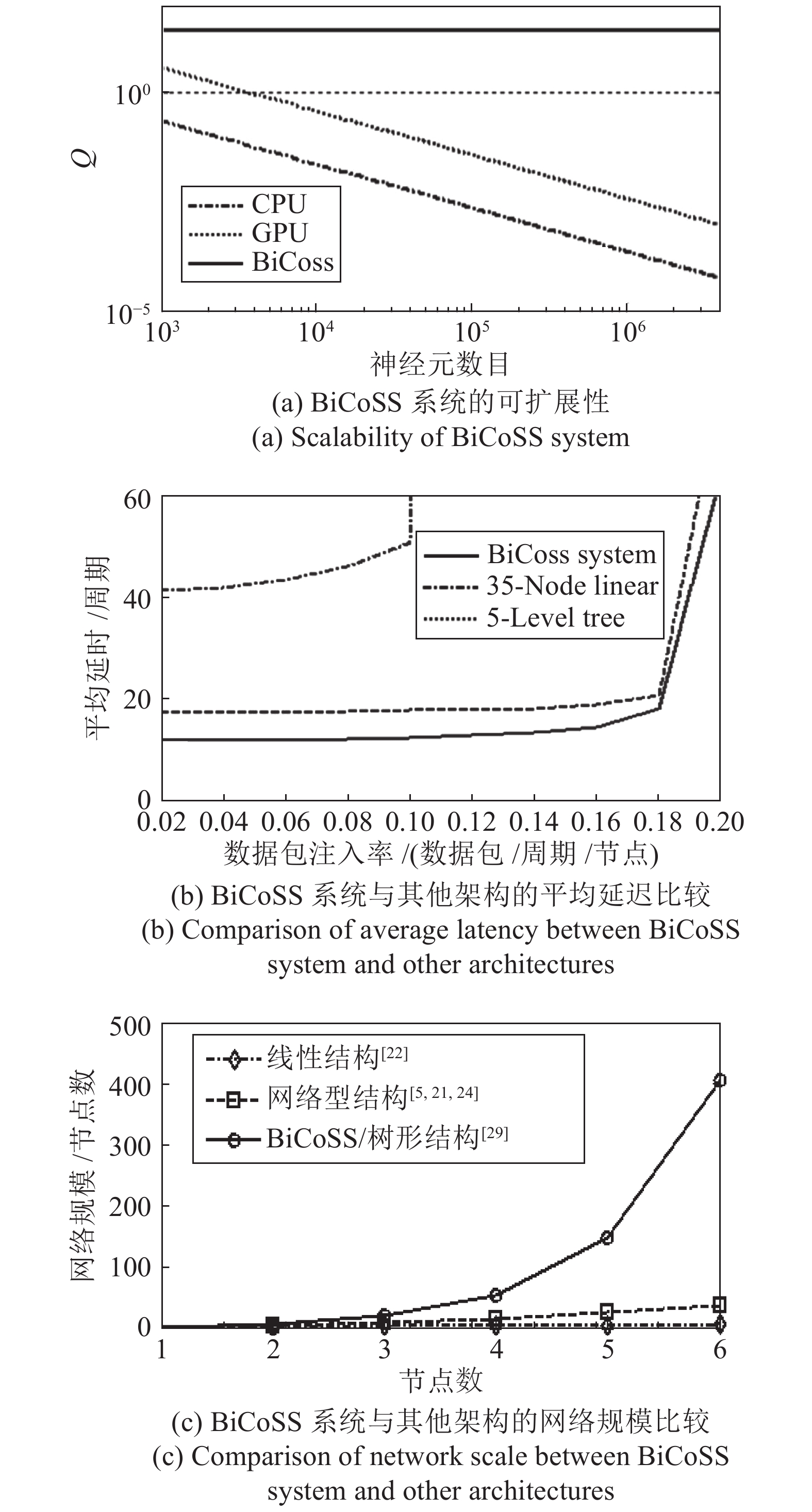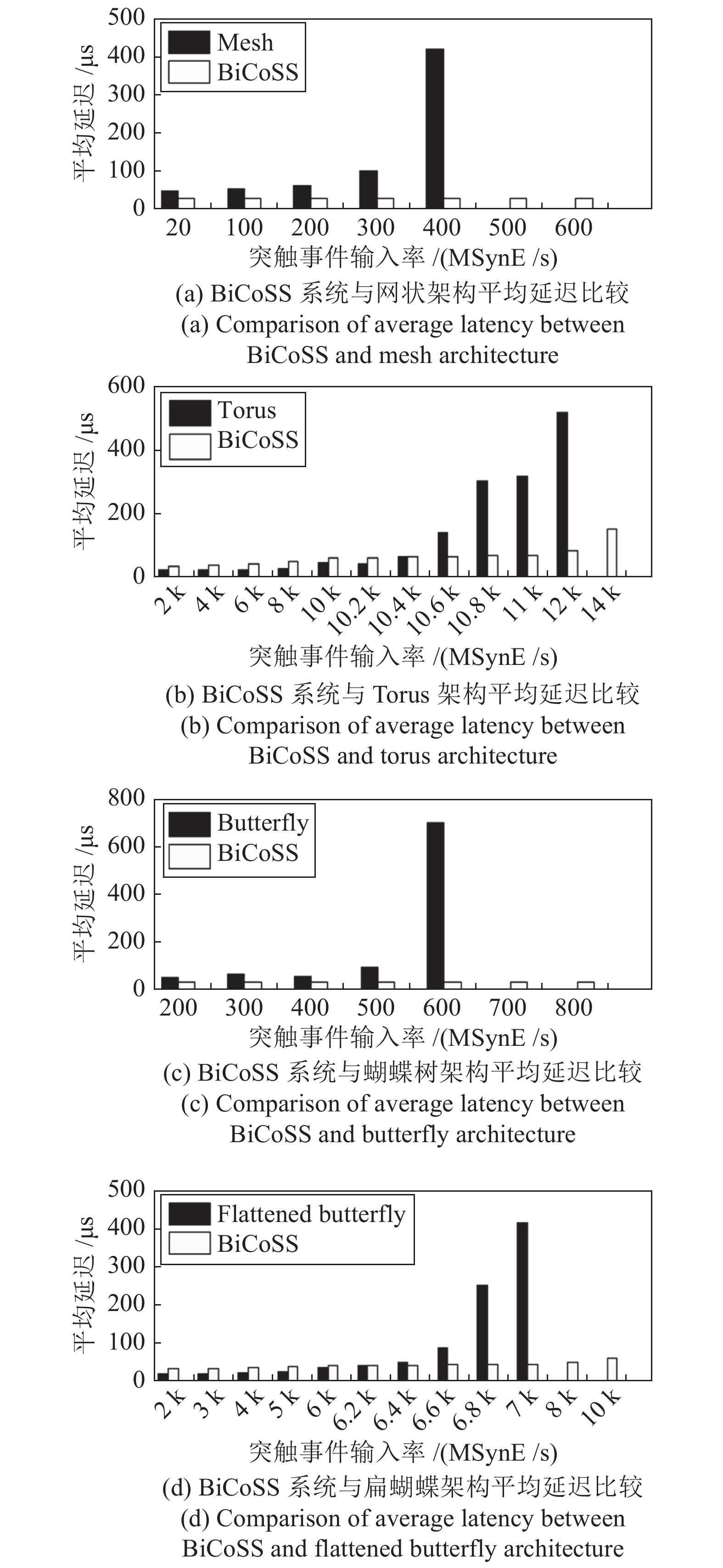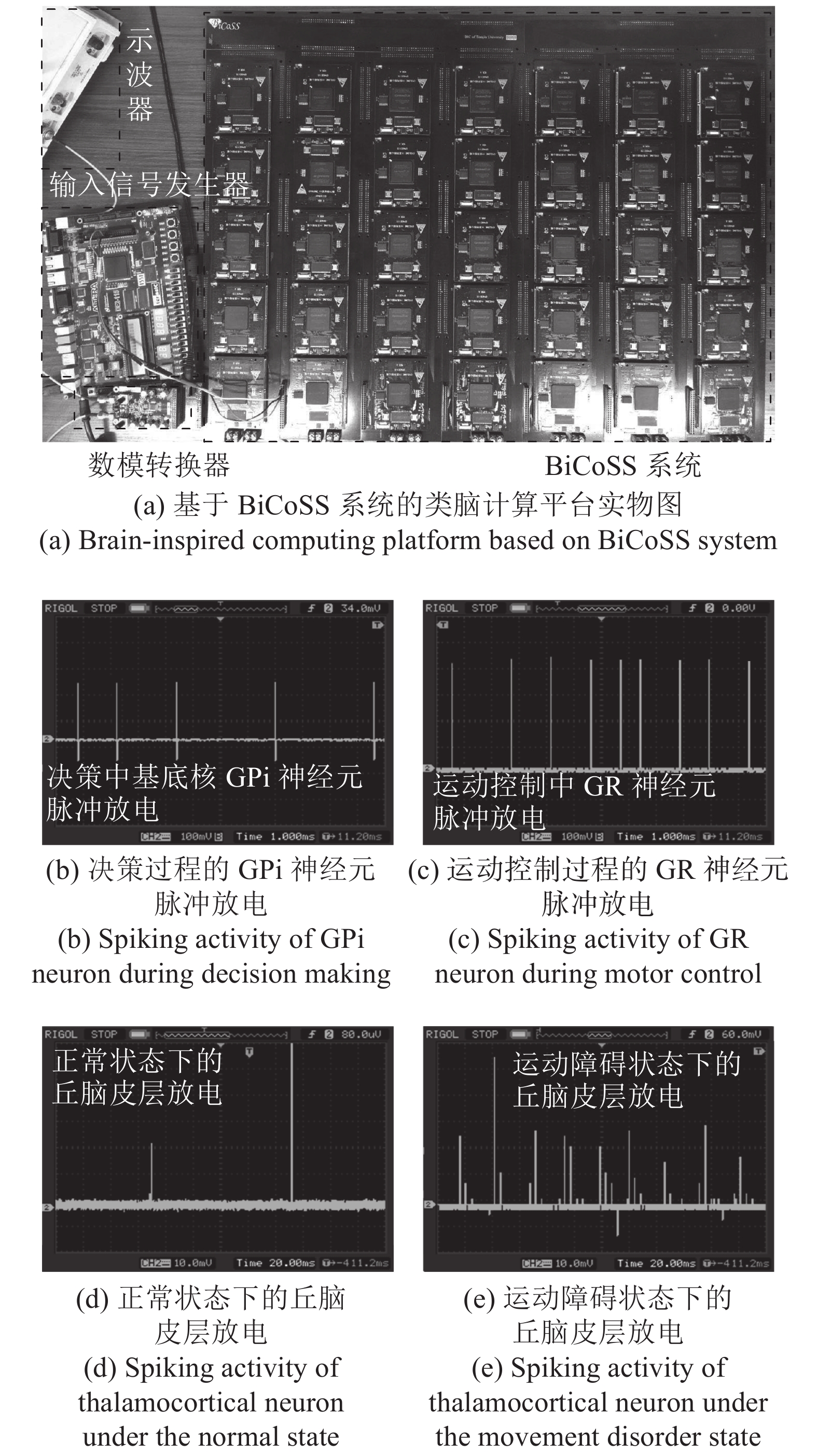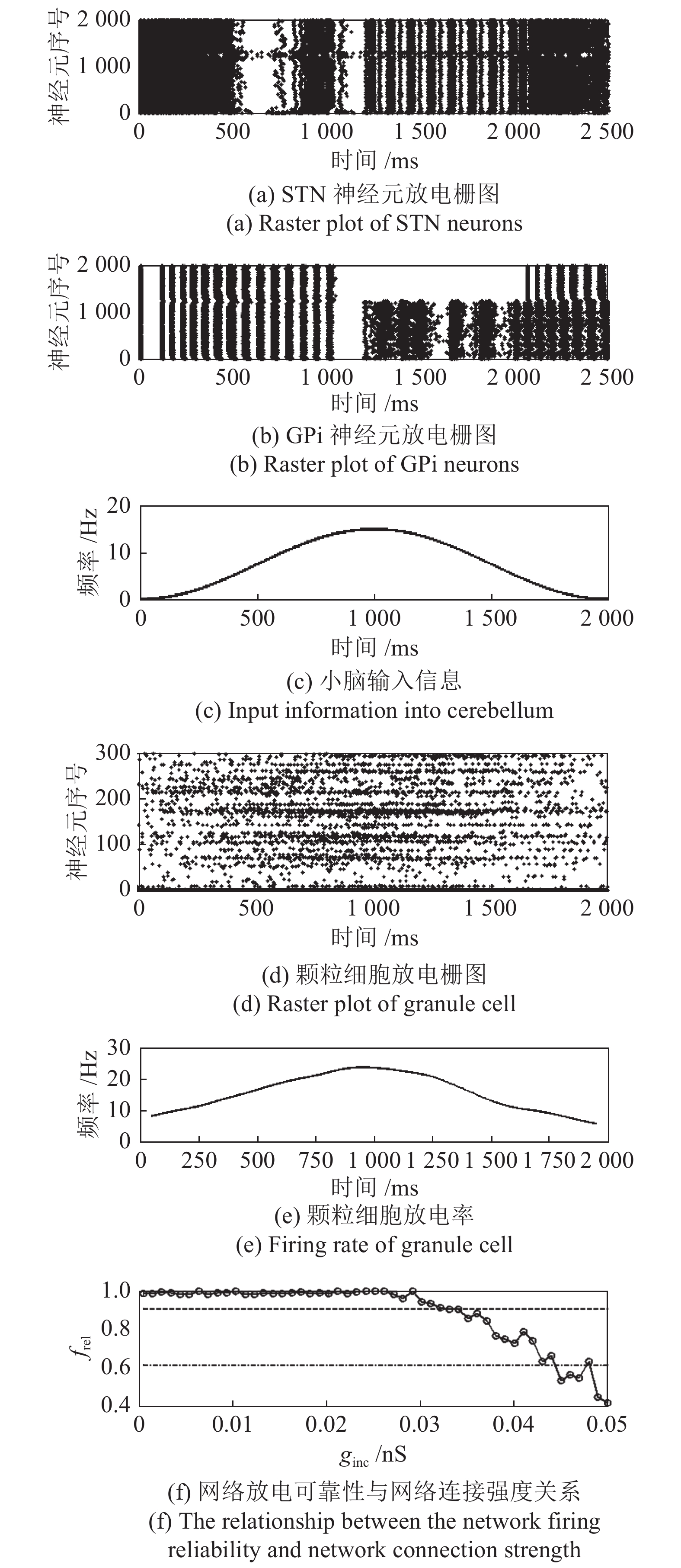Large-scale Brain-inspired Computing System BiCoSS: Its Architecture, Implementation and Application
-
摘要: 人脑具有协同多种认知功能的能力与极强的自主学习能力, 随着脑与神经科学的快速发展, 亟需计算结构模拟人脑的、性能更强大的计算平台进行人脑智能与认知行为机制的进一步探索. 受人脑神经机制的启发, 本文提出了基于神经认知计算架构的众核类脑计算系统BiCoSS, 该系统以并行计算的现场可编程门阵列(Field-programmable gate array, FPGA)为核心处理器, 以地址事件表达的神经放电作为信息传递载体, 以具有认知计算功能的神经元作为信息处理单元, 实现了四百万神经元数量级大规模神经元网络认知行为的实时计算, 填补了从细胞动力学层面理解人脑认知功能的鸿沟. 实验结果从计算能力、计算效率、功耗、通信效率、可扩展性等方面显示了BiCoSS系统的优越性能. BiCoSS通过人脑信息处理的计算架构以更贴近神经科学本质的模式实现了类脑智能; 同时, BiCoSS为神经认知和类脑计算的研究和应用提供了新的有效手段.Abstract: Human brain has the ability of integrating multiple cognitive functions and strong autonomous learning capability. With the rapid development of neuroscience, it is important and necessary to implement a brain simulation platform with higher performance that is inspired by brain structure to further explore the brain intelligent and mechanism of cognitive behaviors. Inspired by the mechanism of human neural system, a multi-core brain simulation system BiCoSS is presented in this paper, which is based on neurocognitive structure. The presented system uses parallel computing field-programmable gate array (FPGA) as core processor, address event representation (AER) neural spikes as carrier of information transmission, neuron with cognitive computing functions as information processing unit. It realizes the real-time computing of cognitive behaviors in a large-scale neural network with four million neurons, and bridges the gap from the cellular dynamics level to comprehend the human brain cognition functions. The superior performance of BiCoSS is shown in terms of computing power, computing efficiency, power consumption, communication efficiency and scalability. BiCoSS realizes brain-like intelligence based on the computing architecture of brain information processing that is closer to the essence of neuroscience, and provides new effective methods for the research and application of neural cognition and brain-like computing.1) 收稿日期 2019-01-14 录用日期 2019-06-06 Manuscript received January 14, 2019; accepted June 6, 2019 国家自然科学基金(61871287, 61671320, 61601320, 61771330, 62071324, 62006170), 中国博士后科学基金(2021T140510, 2020M680885), 天津市自然科学基金(18JCZDJC32000)资助 Supported by National Natural Science Foundation of China (61871287, 61671320, 61601320, 61771330, 62071324, 62006170), Cina Postdoctoral Science Foundation (2021T140510, 2020M680885), and Natural Science Foundation of Tianjin, China (18JCZDJC32000) 本文责任编委 曾志刚 Recommended by Associate Editor ZENG Zhi-Gang 1. 天津大学电气自动化与信息工程学院 天津 300072 2. 天津职业技术师范大学自动化与电气工程学院 天津 300222 1. School of Electrical and Information Engineering, Tianjin2) University, Tianjin 300072 2. School of Automation and Electrical Engineering, Tianjin University of Technology and Educations, Tianjin 300222
-
表 1 当前路由器相关地址编码
Table 1 The address coding of the current router
当前节点 子节点 邻居节点 父节点 负责神经计算单元 001, 0000 — 001, 0100 010, 0000 0000; 0001, 0010; 0011 001, 0100 — 001, 0100 010, 0000 0000; 0001, 0010; 0011 001, 1000 — 001, 0100 010, 0000 0000; 0001, 0010; 0011 001, 1100 — 001, 0100 010, 0000 0000; 0001, 0010; 0011 010, 0000 — 001, 0100 010, 0000 0000; 0001, 0010; 0011 010, 1000 — 001, 0100 010, 0000 0000; 0001, 0010; 0011 表 2 与当前代表性大规模类脑计算系统比较
Table 2 The comparison with the state-of-the art large-scale brain-inspired computing systems
表 3 基底核模型中不同细胞的参数值
Table 3 Parameter values of different cells in the basal ganglia model
参数 GPe GPi STN $a$ 0.1 0.1 0.005 $b$ 0.2 0.2 0.265 $c$ −65 −65 −65 $d$ 2 2 1.5 $I^{x}$(nA) 10 10 30 $E_{ {\rm{AMPA} } }$(mV) 0 0 0 $E_{ {\rm{NMDA} } }$(mV) 0 0 0 $E_{ {\rm{GABA} } }$(mV) −60 −60 −60 ${\tau }_{ {\rm{AMPA} } }$(ms) 6 6 6 ${\tau }_{{\rm{NMDA}}}$(ms) 160 160 160 ${\tau }_{{\rm{GABA}}}$(ms) 4 4 4 $W_{{\rm{Str}}D2\to GPe}$ 0.8 − — $W_{{\rm{Str}}D1\to GPi}$ — 1 — $W_{{\rm{STN}}\to GPi}$ — — 1.15 表 4 小脑模型中不同细胞的参数值
Table 4 Parameter values of different cerebellar cells
— GR GO PC BS VN IO $\theta $(mV) −35 −52 −55 −55 −38 −50 $C$(pF) 3.1 28 106 107 122.3 10 $G_{{\rm{leak}}}$(nS) 0.43 2.3 2.32 2.32 1.63 0.67 $E_{{\rm{leak}}}$(mV) −58 −55 −68 −68 −56 −60 $G_{{\rm{exc1}}}$(nS) 0.1584 36.4 1 1 33 1 $G_{{\rm{exc2}}}$(nS) 0.0216 3.003 — — 17 — $G_{{\rm{exc3}}}$(nS) — 6.097 — — — — ${\tau }_{{\rm{exc1}}}$(ms) 1.2 1.5 8.3 8.3 9.9 10 ${\tau }_{{\rm{exc2}}}$(ms) 52 31 — — 30.6 — ${\tau }_{{\rm{exc3}}}$(ms) — 170 — — — — $E_{{\rm{exc}}}$(mV) 0 0 0 0 0 0 $G_{{\rm{inh1}}}$(nS) 0.012 — 1 — 30 0.18 $G_{{\rm{inh2}}}$(nS) 0.016 — — — — — ${\tau }_{{\rm{inh1}}}$(ms) 7 — 10 — 42.3 10 ${\tau }_{{\rm{inh2}}}$(ms) 59 — — — — — $E_{{\rm{inh}}}$(mV) −82 — −75 — −88 −75 $G_{{\rm{ahp}}}$(nS) 1 20 100 1 50 1 $E_{{\rm{ahp}}}$(mV) −82 −72.7 −70 −70 −70 −75 ${\tau }_{{\rm{ahp}}}$(ms) 5 5 5 2.5 2.5 10 $I$(nA) — — 250 — 700 — 表 5 皮层−基底核−丘脑皮层模型中不同神经元的参数值
Table 5 Parameter values of different cells in the cortico-basal ganglia-thalamocortical model
— $a$ $b$ $c$ $d$ $I_{{\rm{app}}}$(pA) GPe 0.005 0.585 −65 4 10 GPi 0.005 0.585 −65 4 10 STN 0.006 0.262 −65 2 5 TC 0.002 0.2 −65 2 0 表 6 皮层−基底核−丘脑皮层模型网络连接权重
Table 6 Parameter values of synaptic coupling weight in the cortico-basal ganglia-thalamocortical model
源节点$\to $目的节点 突触连接权重$g_{ij}$ GPe$\to $GPe 0.075 + $g_{{\rm{inc}}}$ GPe$\to $STN 0.025 + $g_{{\rm{inc}}}$ GPe$\to $GPi 0.015 + $g_{{\rm{inc}}}$ STN$\to $GPe 0.075 + $g_{{\rm{inc}}}$ STN$\to $GPi 0.01 + $5g_{ {\rm{inc} } }$ GPi$\to $TC 0.01 + $5g_{ {\rm{inc} } }$ -
[1] 蒲慕明, 徐波, 谭铁牛. 脑科学与类脑研究概述. 中国科学院院刊, 2016, 31(7): 725-736Poo Mu-Ming, Xu Bo, Tan Tie-Niu. Brain science and brainInspired intelligence technology-an overview. Bulletin of Chinese Academy of Sciences, 2016, 31(7): 725-736 [2] 徐波, 刘成林, 曾毅. 类脑智能研究现状与发展思考. 中国科学院院刊, 2016, 31(7): 793-802Xu Bo, Liu Cheng-Lin, Zeng Yi. Research status and developments of brain-inspired intelligence. Bulletin of Chinese Academy of Sciences, 2016, 31(7): 793-802 [3] 王力为, 许丽, 徐萍, 于汉超, 孔明辉, 沈毅, 等. 面向未来的中国科学院脑科学与类脑智能研究--强化基础研究, 推进深度融合. 中国科学院院刊, 2016, 31(7): 747-754Wang Li-Wei, Xu Li, Xu Ping, Yu Han-Chao, Kong MingHui, Shen Yi, et al. Brain science and brain-like intelligence research in Chinese academy of sciences. Bulletin of Chinese Academy of Sciences, 2016, 31(7): 747-754 [4] Park H J, Friston K. Structural and functional brain networks: from connections to cognition. Science, 2013, 342(6158): 1238411 doi: 10.1126/science.1238411 [5] Merolla P A, Arthur J V, Alvarez-Icaza R, et al. A million spiking-neuron integrated circuit with a scalable communication network and interface. Science, 2014, 345(6197): 668-673 doi: 10.1126/science.1254642 [6] Zenke F, Bohté S M, Clopath C, Comşa I M, Göltz J, Maass W, et al. Visualizing a joint future of neuroscience and neuromorphic engineering. Neuron, 2021, 109(4): 571-575 [7] Yang S, Wei X, Wang J, et al. Efficient hardware implementation of the subthalamic nucleus-external globus pallidus oscillation system and its dynamics investigation. Neural Networks, 2018, 94: 220-238. [8] Yang S, Deng B, Li H. FPGA Implementation of Hippocampal Spiking Network and its Real-time Simulation on Dynamical Neuromodulation of Oscillations. Neurocomputing, 2018, 282: 262-276 doi: 10.1016/j.neucom.2017.12.031 [9] 王晓峰, 杨亚东. 基于生态演化的通用智能系统结构模型研究. 自动化学报, 2019 doi: 10.3969/j.issn.1003-8930.2019.01.001Wang X, Yang Y. Research on Structure Model of General Intelligent System Based on Ecological Evolution. ACTA AUTOMATICA SINICA, 2019 doi: 10.3969/j.issn.1003-8930.2019.01.001 [10] Neckar A, Fok S, Benjamin B V, Stewart T C, Oza N N, Voelker A R, et al. Braindrop: A mixedsignal neuromorphic architecture with a dynamical systemsbased programming model. Proceedings of the IEEE, 2019, 107(1): 144-164. doi: 10.1109/JPROC.2018.2881432 [11] 张慧, 王坤峰, 王飞跃. 深度学习在目标视觉检测中的应用进展与展望. 自动化学报, 2017, 43(8): 1289-1305Zhang H, Wang K, Wang F. Advances and Perspectives on Applications of Deep Learning in Visual Object Detection. ACTA AUTOMATICA SINICA, 2017, 43(8): 1289-1305 [12] 陈伟宏, 安吉尧, 李仁发, 李万里. 深度学习认知计算综述. 自动化学报, 2017, 43(11): 1886-1997Chen W, An J, Li R, Li W. Review on Deep-learning-based Cognitive Computing. Review on Deep-learning-based Cognitive Computing, 2017, 43(11): 1886-1997 [13] Hassabis D, Kumaran D, Summerfield C, et al. Neuroscience-Inspired Artificial Intelligence. Neuron, 2017, 95(2): 245-258. doi: 10.1016/j.neuron.2017.06.011 [14] Thakur C S T, Molin J, Cauwenberghs G, et al. Large-scale neuromorphic spiking array processors: A quest to mimic the brain. Frontiers in neuroscience, 2018, 12: 891. doi: 10.3389/fnins.2018.00891 [15] Eliasmith C, Trujillo O. The use and abuse of large-scale brain models. Current opinion in neurobiology, 2014, 25: 1-6 doi: 10.1016/j.conb.2013.09.009 [16] Izhikevich E M, Edelman G M. Large-scale model of mammalian thalamocortical systems. Proceedings of the national academy of sciences, 2008, 105(9): 3593-3598 doi: 10.1073/pnas.0712231105 [17] Yang S, Deng B, Wang J, et al. Scalable Digital Neuromorphic Architecture for Large-Scale Biophysically Meaningful Neural Network With Multi-Compartment Neurons. IEEE Transactions on Neural Networks and Learning Systems, 2019, 71: 62-75. [18] Markram H. The blue brain project. Nature Reviews Neuroscience, 2006, 7(2): 153 doi: 10.1038/nrn1848 [19] Markram H. The human brain project. Scientific American, 2012, 306(6): 50-55 doi: 10.1038/scientificamerican0612-50 [20] Insel T R, Landis S C, Collins F S. The NIH brain initiative. Science, 2013, 340(6133): 687-688 doi: 10.1126/science.1239276 [21] Furber S B, Galluppi F, Temple S, et al. The SpiNNaker project. Proceedings of the IEEE, 2014, 102(5): 652-665 doi: 10.1109/JPROC.2014.2304638 [22] Benjamin B V, Gao P, McQuinn E, et al. Neurogrid: A mixed-analog-digital multichip system for large-scale neural simulations. Proceedings of the IEEE, 2014, 102(5): 699-716 doi: 10.1109/JPROC.2014.2313565 [23] Kumar S. Introducing qualcomm zeroth processors: Brain-inspired computing. Qualcomm OnQ Blog, 2013: 1-11 [24] Petrovici M A, Vogginger B, Müller P,Breitwieser O, Lundqvist M, Muller L, et al. Characterization and compensation of network-level anomalies in mixed-signal neuromorphic modeling platforms. PloS one, 2014, 9(10): e108590 doi: 10.1371/journal.pone.0108590 [25] Chen T, Du Z, Sun N, et al. Diannao: A small-footprint high-throughput accelerator for ubiquitous machinelearning. ACM Sigplan Notices, 2014, 49(4): 269-284 [26] Chen Y J, Luo T, Liu S L, Zhang S J, He L Q, Wang J, et al. Dadiannao: A machinelearning supercomputer. In: Proceedings of the 47th Annual IEEE/ACM International Symposium on Microarchitecture, Cambridge, UK: IEEE, 2014. 609−622 [27] Song S, Miller K D, Abbott L F. Competitive Hebbian learning through spike-timing-dependent synaptic plasticity, Nature Neuroscience, 2000, 3(9): 919-926 doi: 10.1038/78829 [28] Yang S M, Wang J, Deng B, Liu C, Li H Y, Fietkiewicz C,, et al. Real-Time Neuromorphic System for Large-Scale Conductance-Based Spiking Neural Networks. IEEE Transactions on Cybernetics, 2018, 99: 1-14. [29] Park J, Yu T, Joshi S, et al. Hierarchical address event routing for reconfigurable large-scale neuromorphic systems. IEEE transactions on neural networks and learning systems, 2017, 28(10): 2408-2422. doi: 10.1109/TNNLS.2016.2572164 [30] Moore S W, Fox P J, Marsh S J T, Markettos A T, Mujumdar A. Bluehive — A field-programmable custom computing machine for extremescale real-time neural network simulation. In: Proceedings of the 20th IEEE International Symposium on Field-Programmable Custom Computing Machines. Toronto, ON, Canada: IEEE, 2012. 133−140 [31] Yu T, Park J, Joshi S, Maier C, Cauwenberghs G. 65k-neuron integrate-and-fire array transceiver with address-event reconfigurable synaptic routing. In: Proceedings of the 2012 IEEE Biomedical Circuits and Systems Conference (BioCAS), Hsinchu, China, 2012. 21−24 [32] Zhao F F, Zeng Y, Wang G X, Bai J, Xu B. A brain-inspired decision making model based on top-down biasing of prefrontal cortex to basal ganglia and its application in autonomous uav explorations. Cognitive Computation, 2018, 10(2): 296-306 [33] Yamazaki T, Tanaka S. A spiking network model for passage-of-time representation in the cerebellum[J]. European Journal of Neuroscience, 2007, 26(8): 2279-22292. doi: 10.1111/j.1460-9568.2007.05837.x -




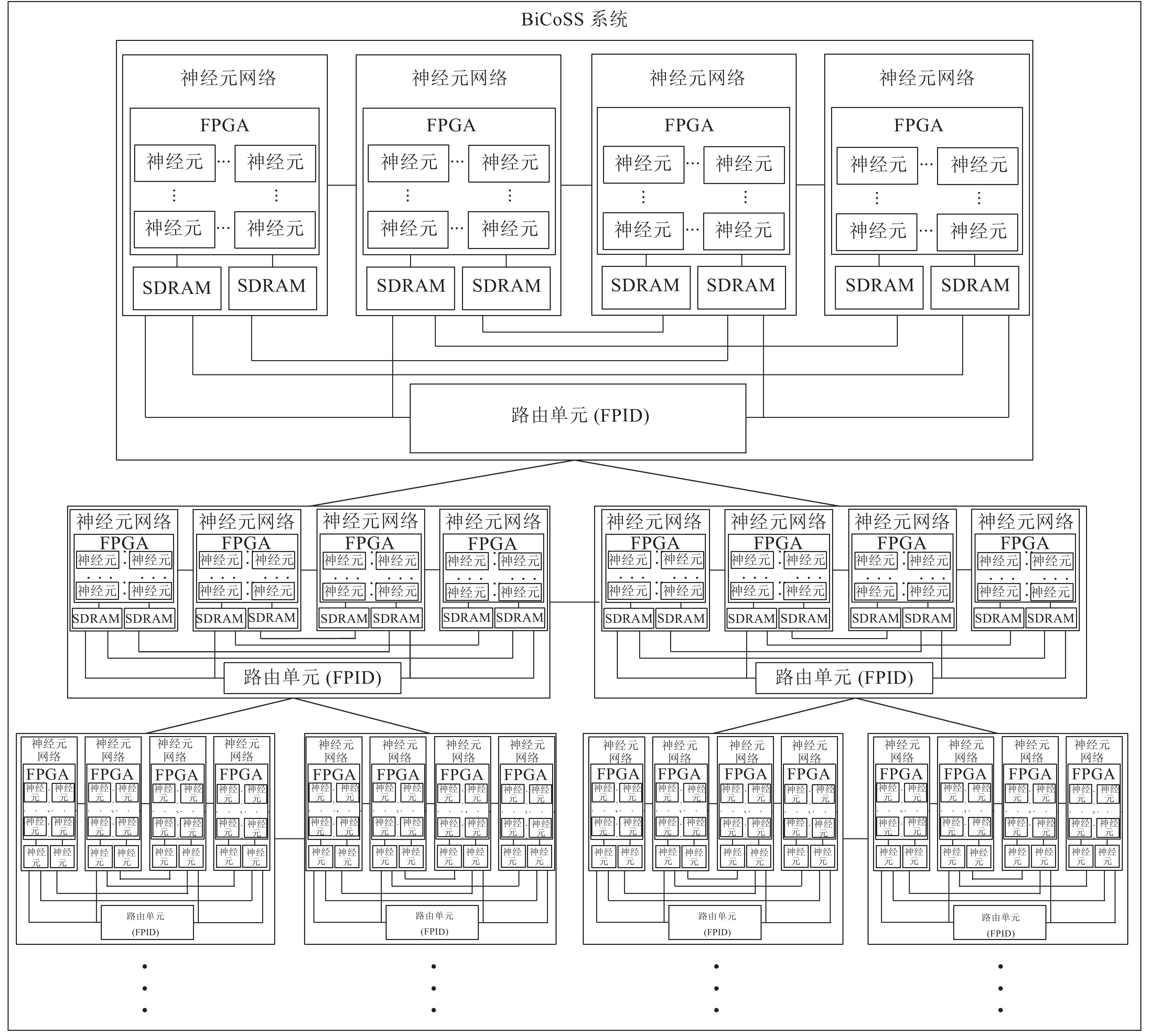
 下载:
下载:


